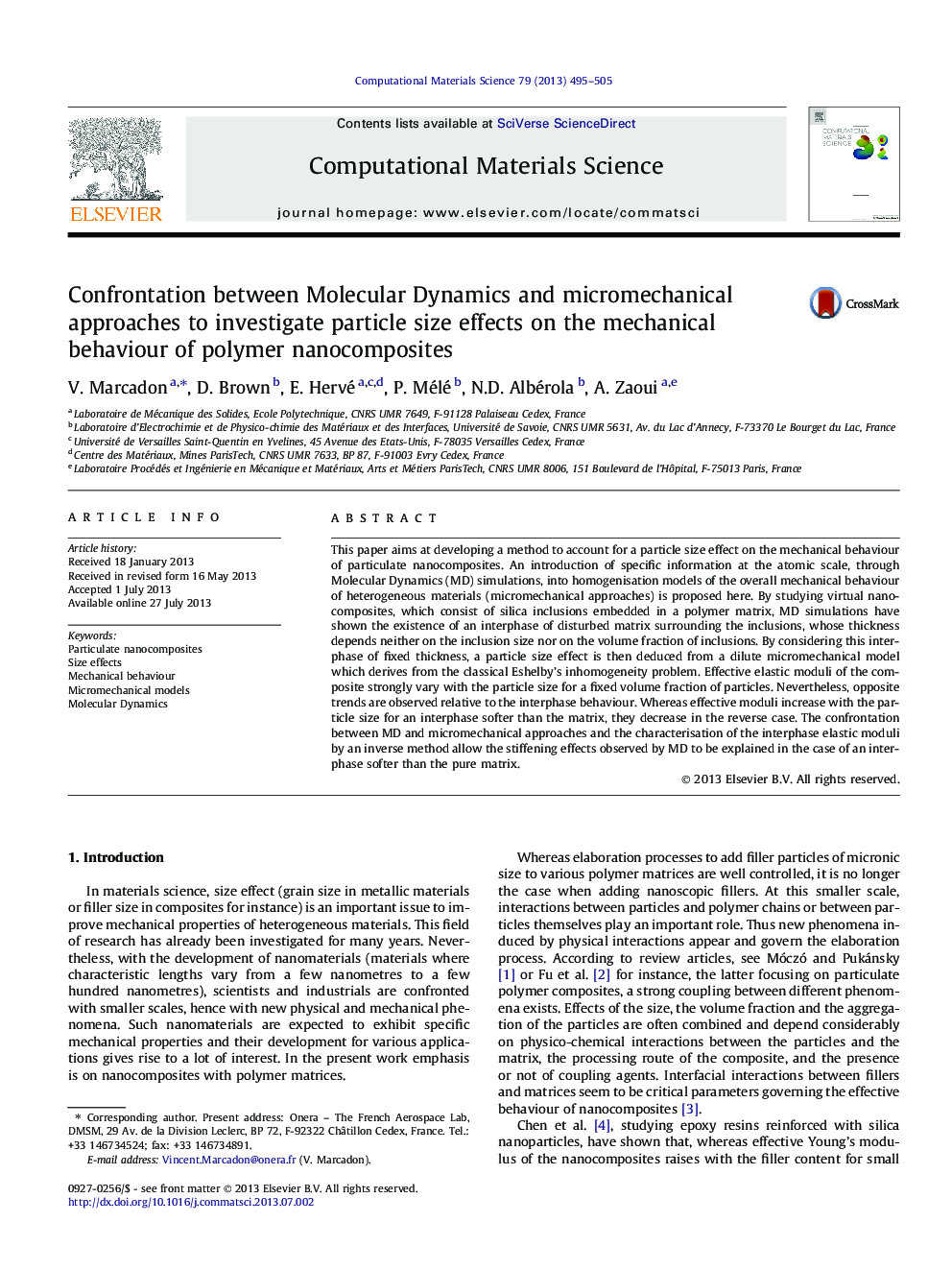| Article ID | Journal | Published Year | Pages | File Type |
|---|---|---|---|---|
| 7961585 | Computational Materials Science | 2013 | 11 Pages |
Abstract
This paper aims at developing a method to account for a particle size effect on the mechanical behaviour of particulate nanocomposites. An introduction of specific information at the atomic scale, through Molecular Dynamics (MD) simulations, into homogenisation models of the overall mechanical behaviour of heterogeneous materials (micromechanical approaches) is proposed here. By studying virtual nanocomposites, which consist of silica inclusions embedded in a polymer matrix, MD simulations have shown the existence of an interphase of disturbed matrix surrounding the inclusions, whose thickness depends neither on the inclusion size nor on the volume fraction of inclusions. By considering this interphase of fixed thickness, a particle size effect is then deduced from a dilute micromechanical model which derives from the classical Eshelby's inhomogeneity problem. Effective elastic moduli of the composite strongly vary with the particle size for a fixed volume fraction of particles. Nevertheless, opposite trends are observed relative to the interphase behaviour. Whereas effective moduli increase with the particle size for an interphase softer than the matrix, they decrease in the reverse case. The confrontation between MD and micromechanical approaches and the characterisation of the interphase elastic moduli by an inverse method allow the stiffening effects observed by MD to be explained in the case of an interphase softer than the pure matrix.
Related Topics
Physical Sciences and Engineering
Engineering
Computational Mechanics
Authors
V. Marcadon, D. Brown, E. Hervé, P. Mélé, N.D. Albérola, A. Zaoui,
